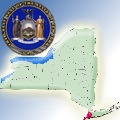- By NYS Comptroller's Office
- Business & Technology
 Print
Print  New York state continues to have high levels of foreclosure activity with new foreclosure filings remaining significantly higher than prerecession levels, according to a report released today by State Comptroller Thomas P. DiNapoli.
New York state continues to have high levels of foreclosure activity with new foreclosure filings remaining significantly higher than prerecession levels, according to a report released today by State Comptroller Thomas P. DiNapoli."The foreclosure crisis is far from resolved, and there are still too many people losing their homes," DiNapoli said. "In many places the situation has continued to get worse. Foreclosed properties displace families and weigh heavily on local communities, reducing property values and eroding tax bases. We must continue efforts to help homeowners and stem the spread of foreclosure-induced blight."
Foreclosure filings rose rapidly after the housing bubble burst and the recession of 2008-2009 took hold. Between 2006 and 2009, the number of new foreclosure cases filed jumped from 26,706 to 47,664, an increase of 78 percent. In 2011 and 2012, new filings declined as new court rules were issued requiring lenders to affirm their claim to the property.
Since reaching a low of 16,655 in 2011, new filings climbed to 46,696 by 2013 before falling to 43,868 in 2014, still well above prerecession levels.
The Comptroller's report shows the number of pending foreclosure cases grew by 27 percent from the beginning of 2013 to May 2014 (from 72,183 to over 91,600). Since then, the pending caseload has remained fairly steady at over 90,000.
Areas immediately outside of New York City (Long Island and the Mid-Hudson region) have the greatest number of pending foreclosures and have seen the number of pending foreclosure cases rise 63 percent from 25,097 at the beginning of 2013 to 40,985 two years later, according to the report.
Pending foreclosure cases across upstate grew by 47 percent while New York City saw a 10 percent drop over the same two-year period. The state's courts' efforts to work through a large backlog of foreclosure cases are exacerbated by the state's complicated judicial foreclosure process, but a number of state governmental entities, including the Unified Court System, the Department of Financial Services and the Attorney General, are making efforts to resolve cases that have become stalled, to monitor properties with delinquent mortgages and to return vacant abandoned properties to productive use.
DiNapoli previously reported on the foreclosure problem in 2012, highlighting the impact on local governments in New York state.
v11i32




